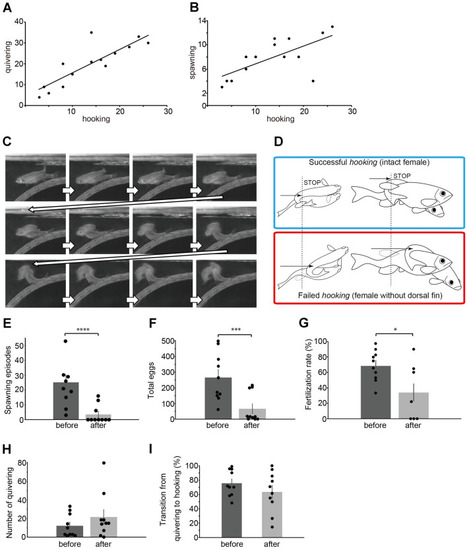
Functional significance of hooking behavior. (A) The numbers of quivering plotted against those of hooking. (r = 0.85, p = 0.00010). (B) The numbers of spawning plotted against those of hooking (r = 0.68, p = 0.0069). (C) Photographs showing mating behavior of an intact male and a female with its dorsal fin removed. The female is behind the male in the initial frame. The trunk of the male slips rostrally without switching to squeezing. (D) Illustrations showing typical hooking behavior of a WT intact pair (upper blue box), and the WT pair with the female fin removal (lower red box). (E) Identified episodes of spawning before and after the fin removal (p = 0.00088, t-score = 3.98, n = 10). (F) Total number of released eggs before and after the fin removal (p = 0.0029, t-score = 3.44). (G) Fertilization rate before and after the amputation. Fertilization rate was significantly decreased after dorsal fin removal (p = 0.027, t-score = 2.45). (H) Episodes of quivering before and after the fin removal (p = 0.29, t-score = − 1.08). (I) The percentage of pairs proceeding from quivering to hooking (Note all hooking bouts finished incompletely after the fin removal, p = 0.27, t-score = 1.15). Regression lines are shown in (A) and (B).
|

